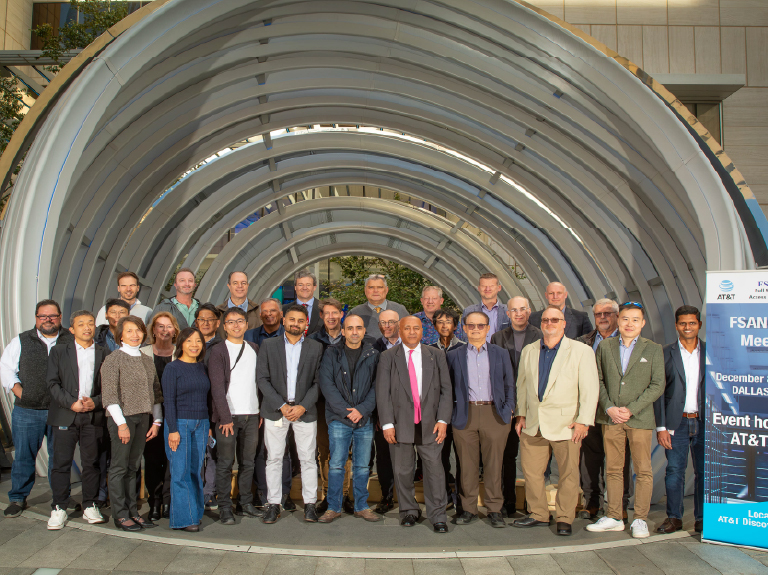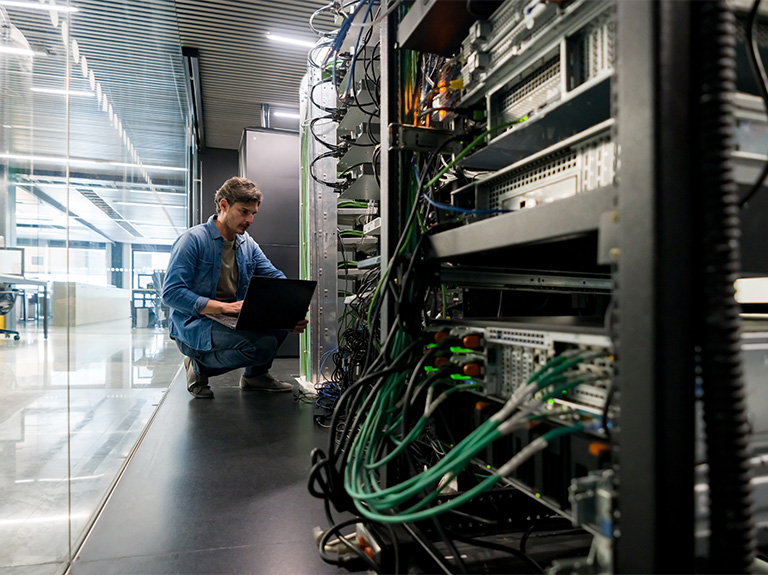The arrival of technology advances such as the smartphone, personal computers in most homes, and the internet reshaped our world in ways that were unimaginable at the time. People had access to information at their fingertips – plus, the ability to act on that information almost immediately. Communication was revolutionized. New opportunities emerged for how we both worked and played.
Now, we’re witnessing a similar seismic shift with Generative AI, especially as it’s becoming integrated into a growing number of devices such as our phones, laptops and wearables.
The opportunities are enormous. GenAI is driving major efficiencies in how we work, making our employees more effective and helping them deliver better service for our customers. For example, our software developers are seeing efficiency gains of 30% or more when using GenAI to help develop and create code. Our internal GenAI platform called Ask AT&T is delivering benefits not just for our software developers, but for employees across the company and the customers they serve.
But I also think GenAI holds profound promise in our everyday lives, as well.
Over the last year and a half, we’ve become more familiar with the surprising capabilities of conversational GenAI through chat programs powered by what are known as Large Language Models. And over the last few months, image and video generation has taken off, too.
GenAI for Everyone
A lot of folks are clearly excited about the potential for GenAI. In a survey we recently commissioned, 59% of Millennials and 58% of Gen-Z are Somewhat-to-Very Positive regarding using AI in daily life compared to the national average of 52%. Older users are a bit more hesitant, to be sure, but they’re also the least likely to have used GenAI yet, perhaps waiting to see how it actually benefits them.
As these models mature and additional capabilities like autonomous assistants become more sophisticated, I think we’ll start to see GenAI supporting us in almost every part of our lives. Think of the voice assistants already available on smartphones and smart speakers, but able to take actions much more complex than setting timers or doing simple math.
GenAI will be central to planning vacations and trips, organizing our schedules, helping us manage our finances, assisting in research, helping us communicate better with our friends and family and managing our business interactions more efficiently. GenAI-based tutors, trainers, translators, and more will also quickly become accepted.
It’s important to note that GenAI doesn’t replace the human aspect of what we do. It enhances it, both in good times and in some of the toughest. I personally used GenAI recently in a difficult moment to draft an obituary and eulogy for my dad. It allowed me to focus and clearly communicate the impact he had on our family and his community.
Along with advances in how we use GenAI, we’ll also see advances in where we use it. I think we’ll see GenAI migrate from laptops and smartphones to just about every item we interact with – from GenAI home security systems, climate controls and lighting systems, to our cars, the stores we shop in, and the stadiums and arenas we visit.
AI-Ready Network
And the AT&T network will be ready to support all that data traffic, I might add! In fact, we’re always enhancing and expanding our network so that we can be ready for the Next Big Thing. On an average day, our network now carries 737.2 petabytes of data (a petabyte being equal to about 20 million filing cabinets worth of printed out info). That’s a 5,166% increase from an average day in 2007, the dawn of the smartphone era.
As GenAI proliferates and delivers these great benefits, though, we do need to be mindful of potential risks. This is no different than how we had to learn to be safe online.
GenAI Ethics and Safety
As the ability to create increasingly realistic images, audio, and video improves, we’ll have to be vigilant for fraud and scams using these tools. We’re testing potential solutions for using GenAI to detect scammers and fraudsters. We’ll likely see these attacks increase, whether for financial gain or as cyber-attacks.
Privacy and data security also need to be top of mind, as is ensuring the feedback you’re getting from a GenAI tool is accurate, reliable and free of bias. And how do we embrace the creativity of GenAI without infringing on intellectual property rights?
We’re starting to answer some of these questions. For example, there are technical tools such as Retrieval Augmented Generation (or RAG) that improve accuracy by focusing the GenAI technology on trusted sources of truth used to generate the response to your question.
But some of the questions will be dependent on the business models of the companies offering GenAI services, or the legal and regulatory frameworks of the countries they operate in, or just our broader social and cultural preferences.
I have no doubt we’ll get there, though. The internet created amazing new opportunities for human communication, commerce, and art. It’s almost impossible now to imagine the world without it. I think GenAI is on the cusp of becoming just as integral and beneficial in our everyday lives.
Read more AT&T Technology & Innovation news



